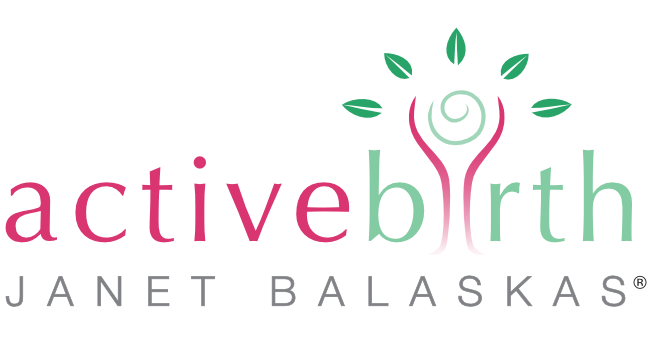Like many of the women who attend your classes, I had hoped for a natural birth at the Whittington Birth Centre, but at 40 weeks + 5 days pregnant I experienced a noticeable reduction in foetal movements. After much discussion with my husband, we agreed to take the hospital’s advice and have the labour induced later the same day. What follows is the story of the birth, and how we tried to make the process as close as possible to the active one we’d hoped and planned for.
Although we believed that induction was the best decision under the circumstances, it was difficult to approach it with a positive mindset. There were no signs that our baby was in distress apart from a period of reduced movement, and we didn’t want to subject her to the stress of what might be a very long labour before she was ready for the world. I was also concerned about the level of monitoring and the implications this would have for my mobility. I was to be strapped to a monitor for 50 minutes every four hours after the induction, and once in active labour the monitoring would be continuous.
Despite these concerns, I was determined for the labour and birth to be a positive experience rather than something to be endured. On arrival at the antenatal ward, we set about transforming our room into a calm, relaxing environment. We strung up fairy lights, scattered cushions, unrolled our yoga mats and pumped up the birth ball. While my husband went out to buy us food I practiced some of the yoga sequences learnt in your classes and finished with relaxation.
I was finally given Propess at 1am. After an hour of monitoring I drifted off to sleep, and my husband went home to do the same. An hour later I was woken up to have my blood pressure checked and realised I was experiencing abdominal cramps. They were mild enough to continue resting but strong enough to prevent me from going back to sleep. Within two hours they had intensified and spread to my back and upper legs. After an uncomfortable 50 minutes of having to lie down to be monitored, I took a long hot shower on my knees on all-fours, rocking my pelvis back and forth as we’d practiced in class. At this point, I had no idea whether my discomfort was a sign of early labour, a side-effect of Propess, or just a more intense version of the cramps I’d sometimes experienced at night in late pregnancy. I only knew that I was physically and emotionally exhausted from the events of the previous day and lack of sleep, and that if this was early labour I would need to find a less energy-intensive way of staying active to relieve the pain over the hours ahead.
Once back in my room I threw down a cushion on the floor beside the birth ball and went straight into child’s pose, resting my head and upper body on the ball and rocking gently. The contractions started soon after: lasting just 20 seconds at first but with only two minutes gaps and the pain in my back making it impossible to rest between them. Unlike the Braxton Hicks I’d experienced before, these were clear surges with a beginning, middle and end. I used the ‘1,2,3’ breathing technique to help me through each one and continued to rock on the ball. The experience was intense but the breathing and rocking were providing much-needed relief and a sense of control over what was happening to my body in this unfamiliar environment.
When breakfast arrived eating a spoonful of porridge between contractions gave me a little more strength and as one contraction subsided I managed to press the buzzer to call the midwife. I needed to know whether these were ‘real’ contractions. If I could go into active labour within the next few hours I wanted my husband with me earlier than planned. The midwife wasn’t able to confirm anything without removing the pessary but she said the next monitoring session, due in two hours’ time, would indicate the strength of my contractions, giving a clearer picture. I knew I needed to stay positive and focussed, but the thought of another two hours alone in that room was making that difficult. I made a breathless phone call to my husband and by the time he arrived I had moved from the ‘1,2,3’ breathing technique to the ‘ahhhh’ breath. Vocalising in this way helped me focus on each out-breath and the brief sense of relief that came with it. My husband applied pressure to my sacrum as I rocked on the ball, using a technique learnt in the Couples’ Yoga class we’d attended together, and I felt instantly calmer, not only because of the physical relief but also because of the emotional support he brought. This was especially helpful when the next monitoring session began. The midwife was unable to detect the baby’s heartbeat in any other position but the pain in my back made it extremely uncomfortable for me to lie down and keep still. I tried taking gas and air and after a couple of breaths I felt drunk, dazed, but relaxed enough to lie down on my side. It made me dizzy but at last I could rest my legs.
I didn’t open my eyes to look at the monitor but I knew from the voices around me that the baby’s heart rate was fine and that my contractions were strong and increasing in duration. After another hour my husband was convinced by the noise I was making that I was either in established labour or experiencing a very unpleasant side-effect of the drug. In either case, the pessary needed to come out. The midwife came in and observed my next few contractions and finally agreed. The pessary was removed; I was 5cm dilated. By the time I was wheeled to the labour ward I was 7cm dilated, still breathing slowly and evenly but screaming on each out-breath with an intensity I never thought myself capable of. My eyes were still firmly shut but I was lucid, and immediately told the new midwife on the labour ward that I needed to be active for these final stages of the labour and delivery. She suggested going on all fours on the bed, and with some effort, she was able to strap the monitor to me in this position.
My waters broke within a few minutes of arriving on the labour ward and less than an hour later I began to feel the urge to bear down. The midwife advised me to push on the next contraction, and as it came I instinctively rose to my feet on the hospital bed. I kept my eyes shut but felt exhilarated; the strength in my legs was fully-restored and the pain in my back was gone, making it possible to stand straight for the first time in hours. I would have stayed in that position and possibly given birth that way, but there were obvious dangers to a labouring woman standing, unsupported, on a hospital bed with her eyes shut! I was gently helped down to the floor beside the bed and my husband helped me stay standing by supporting me under the arms. It felt comfortable but the midwife was worried that the baby would arrive before she had time to fetch a mat thick enough for delivering on the floor. I was helped back onto the bed and went straight into child’s pose, holding the rail at the front of the bed and rocking back and forth then side to side.
My ever-changing positions had made it harder for the midwife to check the progress of the delivery, and our baby’s head started to emerge before she had noticed it crowning. On the next contraction, at 1:12pm, our daughter was born, crying before her feet had even emerged. The delivery stage had lasted just 17 minutes. Any concerns for our baby’s welfare were immediately eased and she was passed underneath me, cord still intact, as I knelt in the birthing position. We had our first cuddle and then my husband cut the cord while the midwife helped me sit up in bed. After spending a few precious moments with my daughter on my chest, she was passed to my husband so the staff could repair a small tear. Unfortunately, I lost quite a lot of blood but my body recovered well and there was no need for a transfusion. Once the tear had been stitched up I was able to hold my baby again and breastfeed her for the first time. Around 24 hours after the birth we were ready to go home. Our baby was healthy, alert and had taken to breastfeeding well. I was weak, sore, but happy beyond words and confident that I could feed and care for our baby with the support of my husband.
Looking back, the confidence I had in my ability (and my body’s ability) to feed and care for our daughter seems like a natural progression from an active birth. Being able to give birth to our daughter actively, despite the constraints that came with a closely-monitored labour, was a hugely empowering life experience in itself. In turn, the 20 weeks of pregnancy yoga classes I attended (with practice in between, of course!) gave me the confidence to follow my birthing instincts and a range of ‘tools’ to prepare physically and mentally for the birth. This journey, from pregnancy to birth and into motherhood, has been amazing so far. Thank you so much for the important role that your classes have played in it, and here’s to another year of helping women discover the joy of an active birth!

